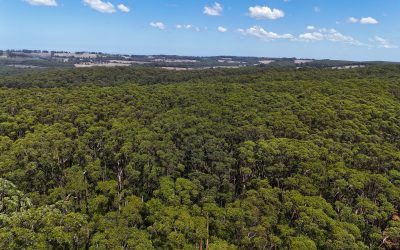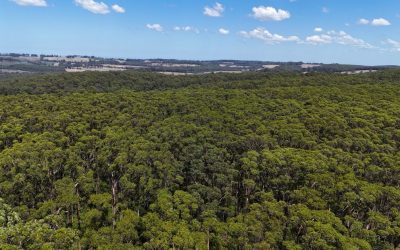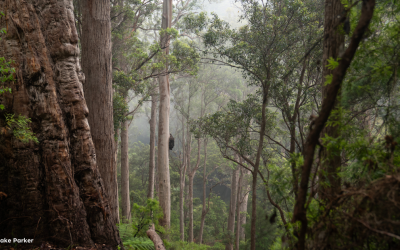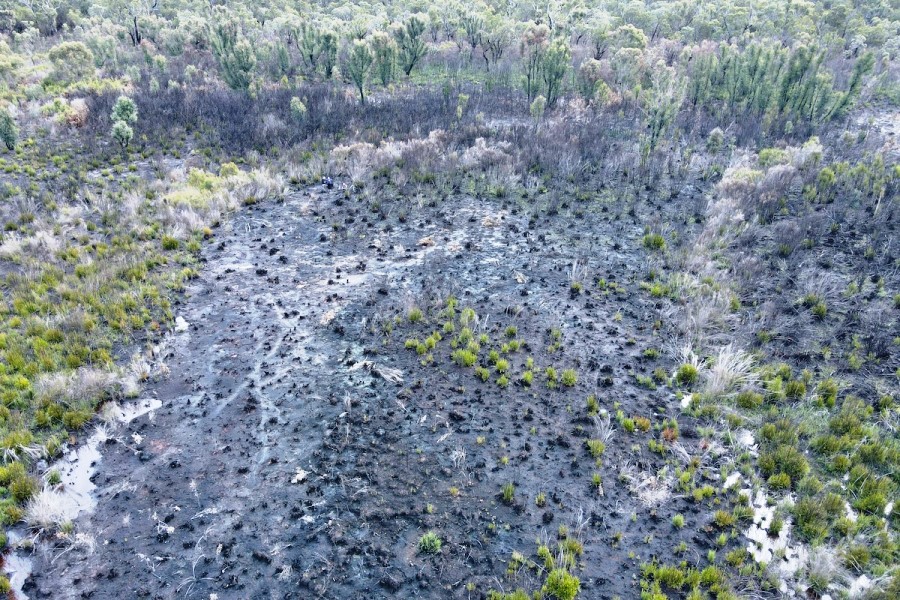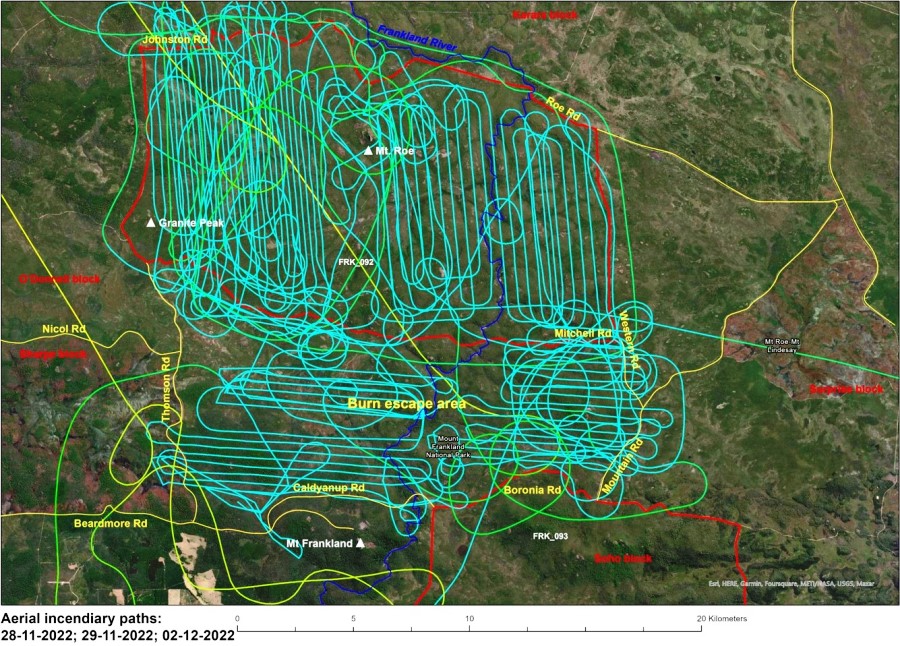The Burning Issue
Prescribed burning needs urgent review

Every year, the Department of Biodiversity Conservation and Attractions (DBCA) burns over 200,000 ha of forests and other ecosystems in the South West of WA.
The program is intended to reduce the risk of wildfire but in reality, it is exacerbating wildfire risk in many ecosystems and having profoundly negative impacts on ecosystems, wildlife, climate and people’s health. As climate change continues to make it more difficult to manage fire, it is critical that we develop a more sophisticated, up-to-date and best-practice management system.
Take Action
Write to WA Government decision-makers to urge them to remove Nornalup’s Tingle forests from the Burn Program and instead fund early detection and rapid suppression fire management systems.
Learn more
It is vital that we give full consideration to contemporary science on the ecological impacts and efficacy of the current prescribed burning regime.
Latest News
WA Government burning money and ecosystems in new budget
MEDIA RELEASE Harewood Forest (pictured) is on the burn list this year, which could be potentially devastating...
Whose safety? Rethinking the planned burn of Harewood Forest
Harewood Forest just outside of Denmark is under threat, with the Department of Biodiversity, Conservation, and Attractions (DBCA) preparing to burn it.
Your Eucalypt of the Year is under threat!
The ‘Wondrous Forests of the Walpole Wilderness’ have captured the hearts of Australians, earning the title of 2025’s Eucalypt of the Year. Yet, despite these accolades, the Department of Biodiversity, Conservation and Attractions (DBCA) still has the Nornalup block in the heart of this region on its prescribed burn list—a decision that could have catastrophic consequences.

What has gone so wrong?
DBCA’s prescribed burning program is measured against two performance targets each year in its annual report: an annual area target and a cost per hectare target. These two targets have a counterproductive influence on DBCA’s planning and implementation. It has become common practice for DBCA to aerially burn vast areas far from towns and infrastructure where targets can be readily met.
These huge burns, lit with hundreds or thousands of incendiaries dropped from helicopters, are extremely hot and devastating to plants, animals and ecosystems. There is no escape for fauna when the fire is coming from all sides and burning at such intensities.
Untold numbers of animals die during the fire, and others afterwards from starvation, shock and predation. This recent report by the Humane Society International and a video of Prof Don Bradshaw’s presentation at Fire and Biodiversity Forum (2021) provide further information on fauna and what needs to change.
The impacts on plants and fungi is equally devastating – it is common for the vegetation to be burnt at very high severities, right up into the canopy. Many plants, including red flowering gums, giant tingles and a number of banksia species that need decades between fires to set seed, cannot cope with intense frequent fire. With every burn, we’re losing more and more of these fire-senstive plants from the South West, with the impacts compounding and becoming irreversible.
Another critical factor is the impact on peat wetlands. Peats take millennia to form. They provide habitat for unique, endangered species and store globally significant volumes of carbon that is lost to the atmosphere when they’re burnt. There should be no burning whatsoever of peats, and fire should be actively kept out of these ancient systems to protect them and to keep their stored carbon in the ground.
Burnt peat – image Bart Lebbing
In November 2022, a DBCA prescribed burn escaped and burned through 25,000ha of the Walpole Wilderness area, including forests areas, peatlands, and granite outcrops. This short video using drone footage by Bart Lebbing shows some of the impacts of the fire.
This image (below) shows the path that the aerial bomber took over the core wilderness of the Walpole Wilderness Area. Up to 15,000 ha was burnt as part of the prescribed burn, with an additional 10,000 ha burnt from escaped fires, in part aerially ignited. This occurred in some of the most intact, biodiverse and sensitive ecosystems of the National Park. This was as dangerous, hot and windy conditions were developing in the late spring and summer of 2022.
Map: Catherine Spaggiari, Denmark Environment Centre
The DBCA management plan for the Walpole Wilderness Area acknowledges that some of the local ecosystems need to be protected from inappropriate fire but meeting the annual area at the lowest possible cost is prioritised, and the consequences we’re seeing on the ground are devastating.
You can read more about what’s happening in this precious and sensitive part of the world and see the evidence local conservationists and scientists have documented in the recently published report Icons to Ashes.
DBCA’s burning is increasing wildfire risk
The prescribed burning regime is supposed to reduce the likelihood of intense future fires. The theory behind DBCA’s program is that burning reduces the amount of ‘fuel’ in the landscape and makes possible future wildfires more manageable.
However, in reality, this approach is not reducing ‘fuels’ – it is doing quite the opposite.
Fire stimulates the growth of thick, tall understoreys in jarrah, karri and tingle forests. These understoreys have been demonstrated by a major recent DBCA study to be the primary driver of uncontrollable fire. Over time, these understoreys self-thin, and long unburnt forests have very low, open understoreys and very low flammability.
So, DBCA has inadvertently created a perverse situation in which the very dense understoreys it is stimulating with fire are causing a risk, so they are burning them again, starting the cycle all over again. Instead, we need to provide for a return to long-unburnt, open, low flammability forest conditions.
Image supplied by Dr Phil Zysltra.
For more information, see the fact sheet ‘Self-thinning forest understorys reduce wildfire risk, even in a warming climate’ by Zylstra, Bradshaw and Lindenmayer
Long-unburnt forests, with low, open understoreys and low flammability are allies in fire suppression. They are also critical for a huge range of plants and animals that rely on long-unburnt ecosystems. But in spite of the evidence, DBCA does not prioritise protection of long-unburnt country from fire.
This map shows how little of the Forest Management Plan area is in a long-unburnt condition. These areas should be prioritised for protection from fire.
Indigenous burning practices
Indigenous peoples have been conducting burns on country for thousands of years, however these cultural burning practices are completely different to the large-scale, extremely hot burns conducted by DBCA. For perspectives on cultural burning by Traditional Owners see the presentations by Lynette Knapp and Wayne and Zac Webb from the Fire and Biodiversity Forum 2021.
What needs to change
- Consult with Traditional Owners about burning practices
- Fully fund, develop and implement a world-class rapid fire detection and suppression system
- Commission an independent expert review into DBCA’s prescribed burning program to assess its implications for wildfire risk, biodiversity, wildlife, ecosystem health, greenhouse gas emissions and human health
- Immediately protect the remaining long unburnt ecosystems
- Actively prevent any burning of fire sensitive ecosystems including peat wetlands, tingles, ficifolias and granites

